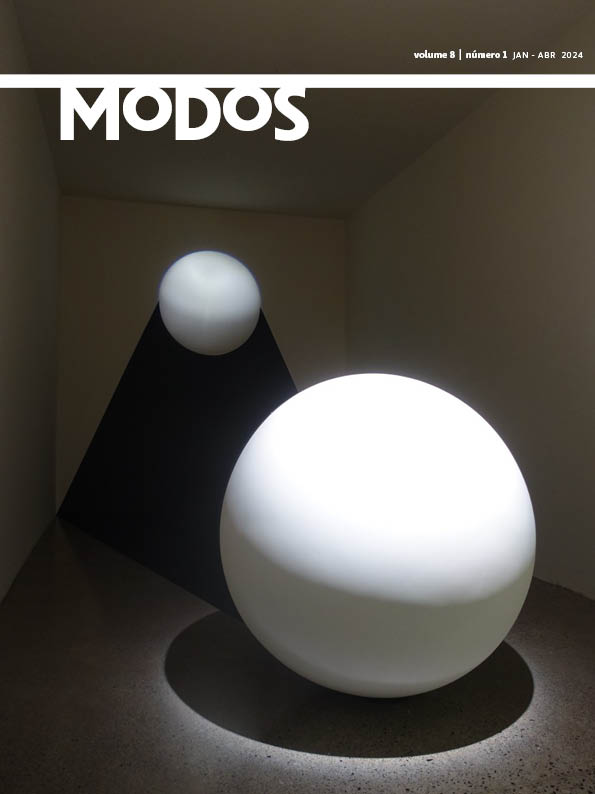Abstract
My objective with this article is not the artists considered vulnerable in terms of the possibility of participating in museographic collections. Nor do I intend to work with collections in conditions of fragility in terms of their protection and conservation. I aim to build paths for a theory of art based on the vulnerability of every body, including the work, permeated by the outside, by difference, by alterity. My intension is to analyze artistic works and texts since the 1960s to elaborate a certain critical poetics in contemporary times that, from the perspective of precariousness, presents alternatives to the logic of individuation – whether related to the work, the subject or the community. The term “precariousness” appeared in the speeches of artists in the 1960s and 1970s in Brazil. I take as a starting point the thought and work of Lygia Clark who used the word in 1963, but I approach other productions from the 1970s, reaching the present day. I understand that the work of art in its precarious condition presents the uncertainty of the process, the failures of expression, the embarrassments of time, still displaying the marks and traces of materialities as a symptom of a permeable movement between exteriority and interiority that shows a decentering of the “I”.
References
BUTLER, J. Quadros de guerra: quando a vida é passível de luto? Tradução Sérgio Tadeu de Niemeyer Lamarão e Arnaldo Marques da Cunha. Rio de Janeiro: Civilização Brasileira, 2015.
BUTLER, J. Vida precária: os poderes do luto e da violência. Tradução Andreas Lieber. 1º edição. Belo Horizonte: Autêntica, 2019.
CLARK, L. Lygia Clark. Catálogo de exposição. Barcelona: Fundació Antoni Tàpies, 1998.
CLARK, L. et al. Opinião 66. Catálogo de exposição. Rio de Janeiro: Museu de Arte Moderna do Rio de Janeiro, 1966.
COSTA, L. C. da. A gravidade da imagem: arte e memória na contemporaneidade. Rio de Janeiro: Quarte/Faperj, 2014.
COSTA, L. C. da. A condição precária da arte: corpo e imagem no século XXI. Belo Horizonte: Relicário, 2022.
ECO, U. Obra aberta: forma e indeterminação nas poéticas contemporâneas. Tradução Giovanni Cutolo. São Paulo: Perspectiva, 1971.
FANON, F. Pele Negra, máscaras brancas. Tradução Sebastião Nascimento e Raquel Camargo. São Paulo: Ubu, 2020.
LEITÃO, H.de A. L. O self no espaço compartilhado: a subjetividade relacional em Winnicott. Ecos, Campos dos Goytacazes, v. 7, n. 1, p. 48-58, 2017.
LOREY, I. State of insecurity: government of the precarious. Edinburgh: Verso, 2015.
MARQUES, A. M. A vida submarina. São Paulo: Companhia das Letras, 2021.
PAULA, D. Entrevista com Adriano Pedrosa. In: PEDROSA, A. et al. (Orgs.). Catálogo de exposição. Dalton Paula: retratos brasileiros. São Paulo: Masp, 2022.
SANTOS, V. Os retratos das mais excelentes vidas pretas do Brasil, desde Ganga Zumba até os dias atuais. In: PEDROSA, A. et al. (Orgs.). Catálogo de exposição. Dalton Paula: retratos brasileiros. São Paulo: Masp, 2022.
TODOROV, T. A vida em comum: ensaio de antropologia geral. Tradução Maria Angélica Deângeli, Norma Wimmer. São Paulo: Unesp, 2014.

This work is licensed under a Creative Commons Attribution-NonCommercial-ShareAlike 4.0 International License.
Copyright (c) 2024 Luiz Cláudio da Costa

